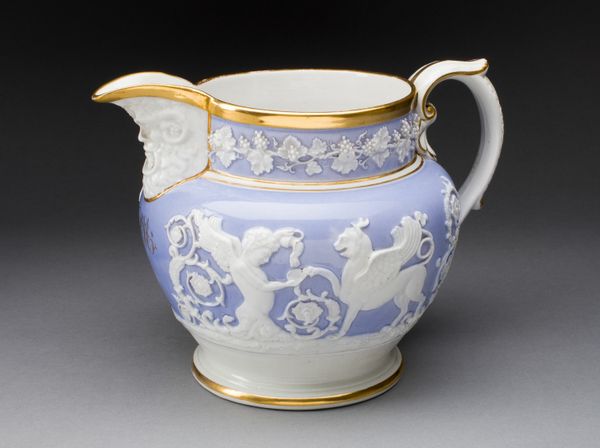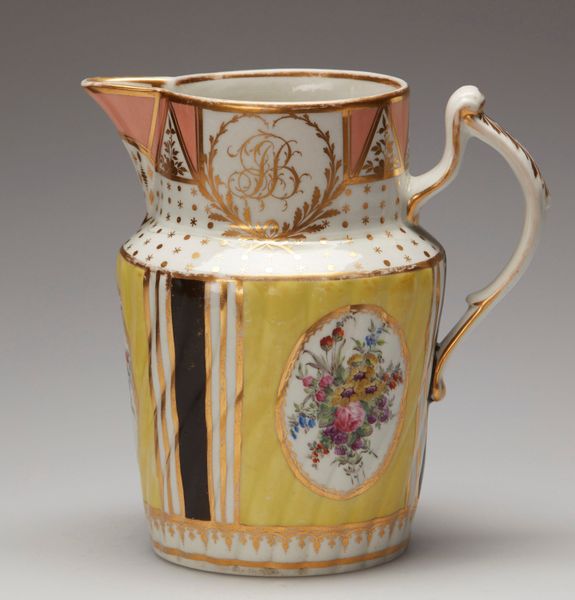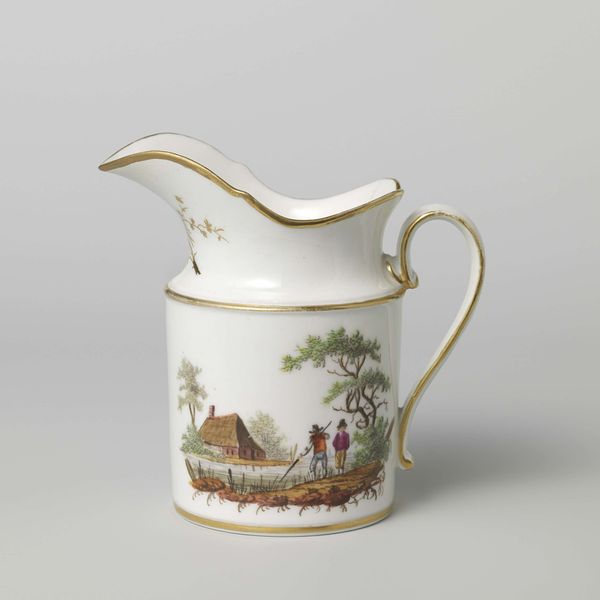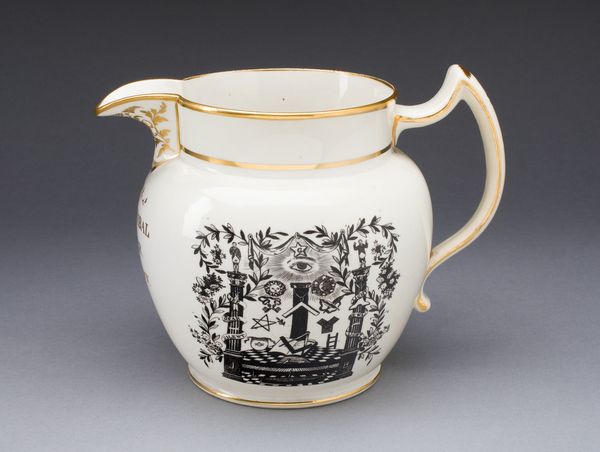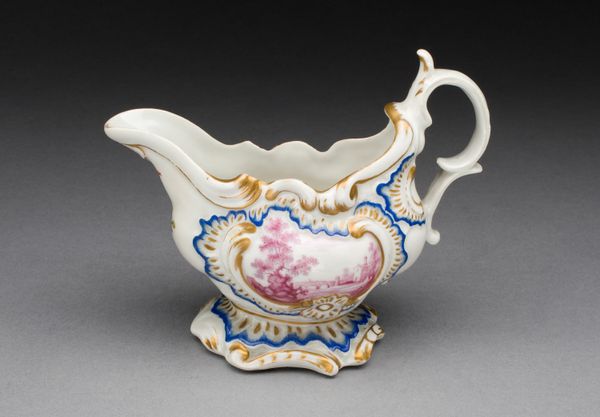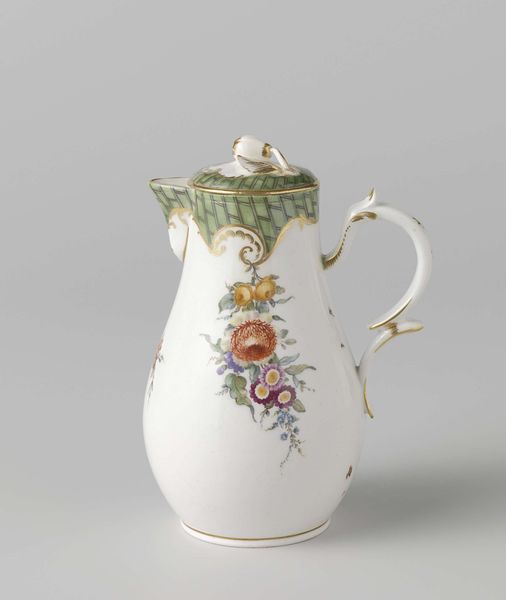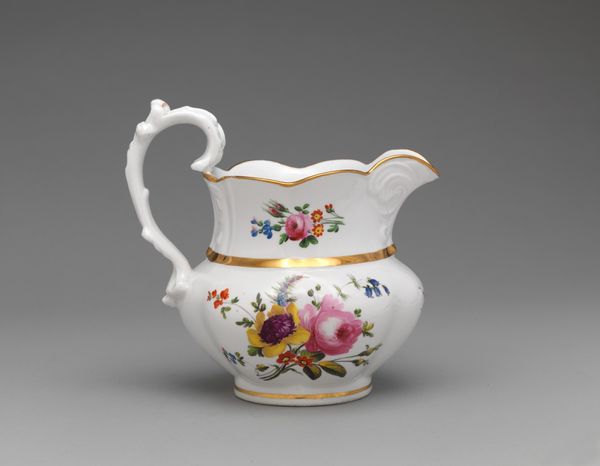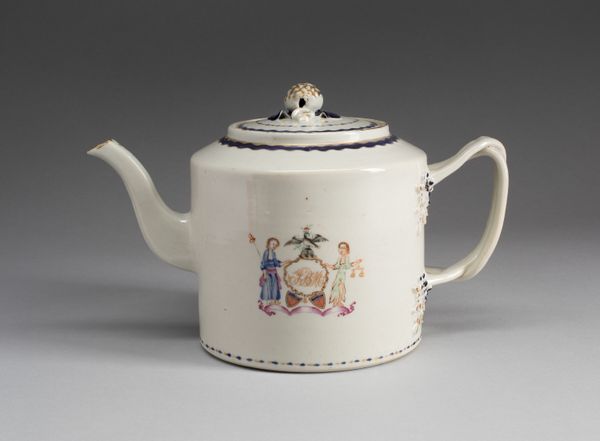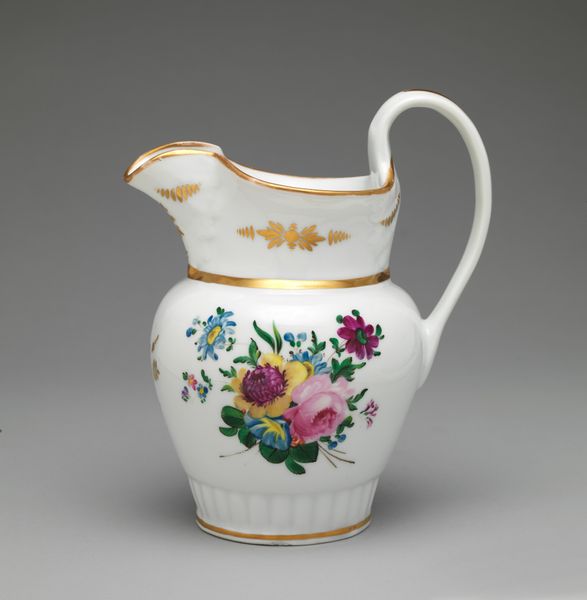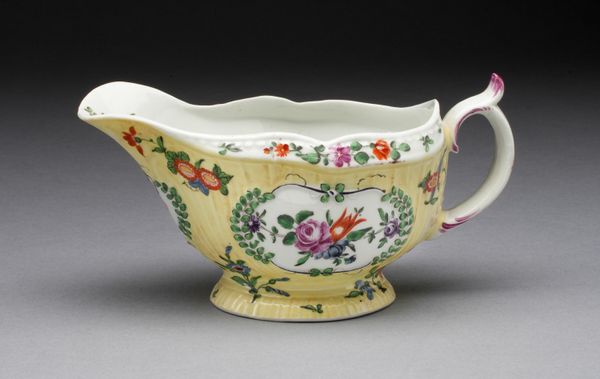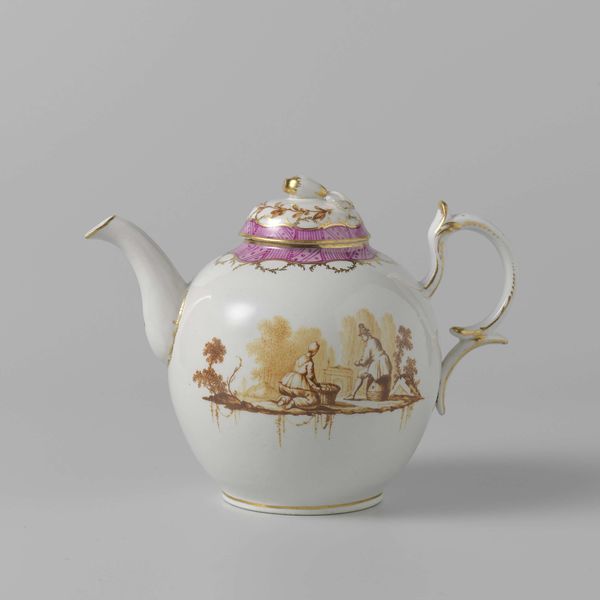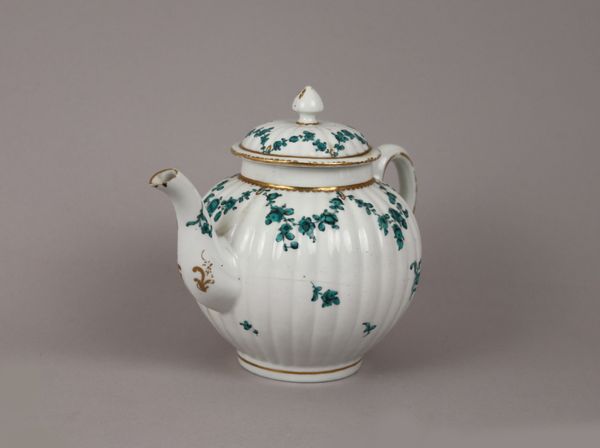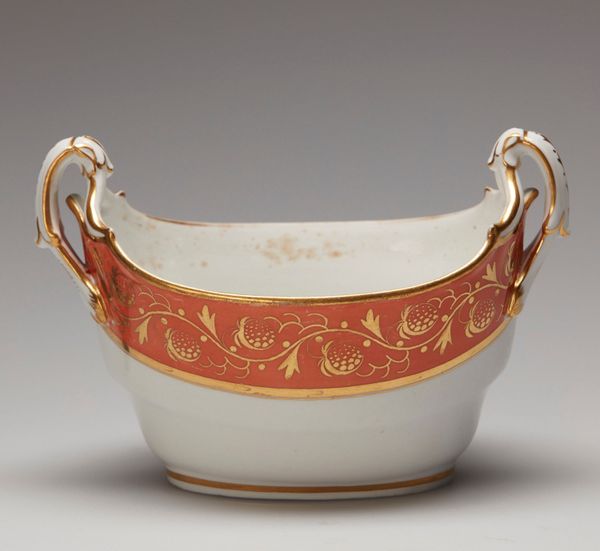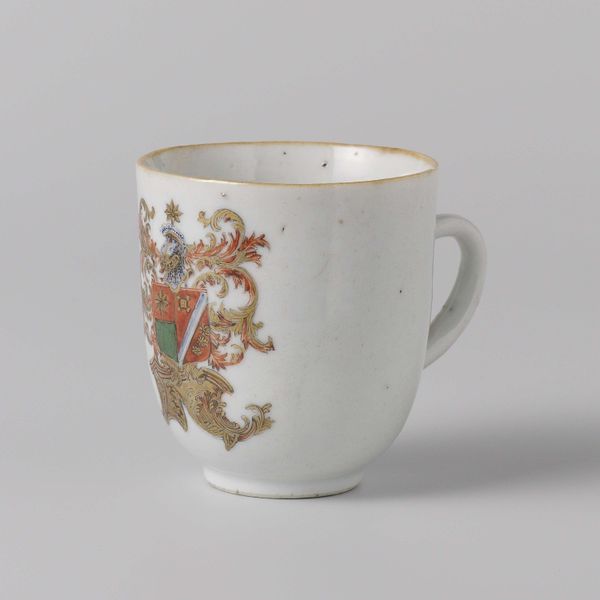
ceramic, porcelain
#
neoclacissism
#
greek-and-roman-art
#
ceramic
#
porcelain
#
ceramic
#
decorative-art
Dimensions: 11.5 × 12.7 cm (4 1/2 × 5 in.)
Copyright: Public Domain
Curator: This is a Creamer, dating from around 1800, crafted by the Worcester Royal Porcelain Company. It currently resides here at The Art Institute of Chicago. Editor: My first impression is how delicately neoclassical it feels. There’s something very serene and balanced about the design. Curator: Indeed. Let’s consider the context. Around 1800, there was an immense fascination with classical forms. This porcelain piece demonstrates how these grand narratives seeped into everyday life, finding their place within domestic ware. These items spoke of prestige, allowing the user to communicate refinement and taste. Editor: And you see that manifest in the use of porcelain itself, which had become increasingly accessible but still symbolized status, alongside those muted but detailed friezes, applied to a very functional form. One has to consider where the raw materials originate for the production of fine bone china at Worcester too, of course. This isn’t just about surface decoration. Curator: Precisely. The manufacturing process, driven by industrial methods, paradoxically facilitated the spread of classical motifs to a broader audience. The politics of display come into play here as well, showcasing how the market economy facilitated the spread of luxury aesthetics among the aspiring classes. Editor: Those neoclassical images... are those hand-painted, or transfer-printed? Either way, it must have been a fairly labor-intensive addition to the ceramic forming, no? What’s also striking is that it's designed with this classical theme, yet, it exists firmly as an object related to domestic servitude. How are enslaved and underpaid laborers participating in producing luxury for elite tea rituals? Curator: A poignant and crucial inquiry! We must acknowledge the human costs inherent in the commodification of artistry, something the decorative object perhaps seeks to conceal beneath layers of beauty. The museum's role here is to present both, isn't it? Both the object's beauty and the hidden processes behind its appearance. Editor: Ultimately, I'm left contemplating the unseen hands that molded this creamer and its socio-economic journey. Curator: A necessary perspective; together, these dual visions reveal the complex layers embedded within this deceptively simple object.
Comments
No comments
Be the first to comment and join the conversation on the ultimate creative platform.
